Arianespace to rival Space X with competitive quality and price
Its 3D printed rocket engine Prometheus will be 10 times cheaper than current engines; next-generation rocket Ariane 6 is set to compete with Space X's Falcon 9
By May 30, 2022 (Gmt+09:00)
LG Chem to sell water filter business to Glenwood PE for $692 million


KT&G eyes overseas M&A after rejecting activist fund's offer


Mirae Asset to be named Korea Post’s core real estate fund operator


StockX in merger talks with Naver’s online reseller Kream


Meritz backs half of ex-manager’s $210 mn hedge fund


The France-based company is accelerating the expansion of its presence in the launch service industry. Its parent company ArianeGroup is developing a reusable 3D printed rocket engine, Prometheus, which will be 10 times cheaper than its current engines. It is also developing the next-generation rocket Ariane 6, which will cost 40% less than the previous Ariane 5, and is set to compete with Space X's two-stage rocket Falcon 9. Recently, Amazon’s project Kuiper signed a contract for 18 launches of Ariane 6.
The company successfully launched Ariane 5 with a James Webb Space Telescope, a space telescope designed to conduct infrared astronomy, last Christmas.
"This is a once-in-a-lifetime mission and Ariane 5 performed flawlessly, doubling Webb’s operational life expectancy in space," said Stéphane Israël, chief executive of Arianespace, in a written interview with The Korea Economic Daily. "Each launch is unique and memorable, but the James Webb Space Telescope has a special place in my heart," the CEO added.
Last week, he delivered a keynote speech during the STRONG (Science, Technology, and Research are Our National Goal) Korea Forum that The Korea Economic Daily and the Ministry of Science and ICT have been jointly holding for a decade. As president of the "France-Corée" club, Mr. Israël said space is also a strategic element of the French-Korean bilateral relationship both in terms of launchers and satellites.
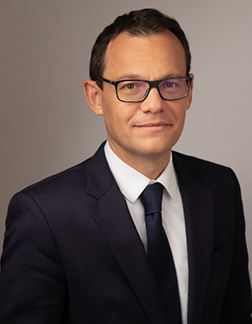
▲ We hear more and more about space, companies based on space applications are multiplying and we feel a growing interest from the US and private actors in investing in space-based activities. What do you think explains this renewed interest?
We live in pivotal times for the space sector, marked by profound transformations. In my opinion, this is due to three major factors.
First, space is omnipresent in our daily lives and is at the heart of the 21st century’s challenges. It helps us better monitor climate change, thanks to Earth observation capabilities, as half of the essential variables are only observable from space. It helps us ensure our security, thanks to applications available from space such as secured telecommunications, navigation, and observation – the Ukrainian crisis we are going through demonstrates its importance in times of conflict. It also helps us bridge the digital divide thanks to connectivity solutions deployed for everyone.
Second, space projects our societies beyond themselves. This is our part of dreaming and conquering challenges. We saw it with human spaceflight and the mission of Thomas Pesquet, European Space Agency (ESA)’s French astronaut, or more recently with the successful launch of the James Webb Space Telescope with Ariane 5. There is a real enthusiasm around the deepening of our knowledge of the universe.
Finally, space is today shaken up and reinvented by new players, the resumption and acceleration of innovation and the materialization of very ambitious projects. These players can be startups or very large companies.
Mega-constellation projects, such as Starlink for SpaceX, OneWeb for which Arianespace has already launched 428 satellites, or project Kuiper for Amazon which has recently bought 18 Ariane 6, are more and more driving the space market. According to Morgan Stanley, we are going from $300 billion in 2018 to a $1.1 trillion space economy in 2040. Arianespace is evolving in this vibrant context.
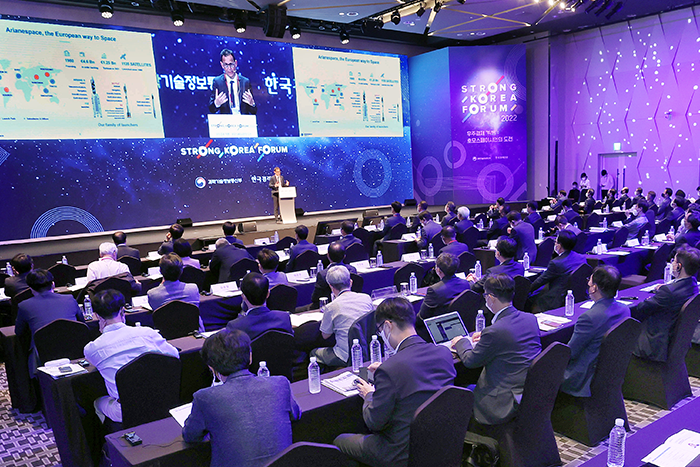
Indeed, the James Webb Space Telescope was launched on Ariane 5 thanks to its incredible reliability and performance. The outstanding injection precision of the Ariane 5 doubled Webb’s life expectancy. Since its introduction in 1996, the Ariane 5 has performed 112 launches with a reliability rate of 98.3%, making it the world’s reference for heavy-lift launchers.
The Ariane 5 is a three-stage vehicle, with a simple and robust architecture. Arianespace, the European launch services provider, has operated the Ariane family of launch vehicles since 1980. The company has a culture of excellence and maintains very strict mission and quality controls.
The core stage of our next-generation vehicle Ariane 6 will be equipped with the Vulcain 2.1 engine, an upgraded liquid engine derived from Ariane 5’s Vulcain 2. Its upper stage will be propelled by the Vinci engine, capable of re-ignition in space allowing us to address a multitude of reference orbits in a single mission.
The Ariane 6 will also be modular. On the sides of the rocket, there will be either two or four solid boosters. Prometheus is our next-generation engine: it is 10 times less expensive than the current Ariane 5 main engine Vulcain 2, it is propelled with liquid oxygen (LOX) and methane, and 70% of its total mass will be produced using the latest additive manufacturing technologies. Last but not least, it will be reusable, in order to power Europe’s launch vehicles starting in 2026.
▲ Ariane 5 of Arianespace may be described as a five-star hotel capable of the safest delivery of satellites, whilst Falcon 9 of Space X is seen as a three- or four-star business hotel. What would be the range of launching costs for the Ariane 5 and how much cost savings has Arianespace achieved so far? Is there a plan to react against the price competitiveness of Falcon 9?
We drastically reduced our prices over the history of the Ariane 5 program, thanks to a mix of introducing efficiencies, increasing the performance of the rocket – today the Ariane 5 can deliver two tons more to geostationary transfer orbit (GTO) than it did at its inception – and generally becoming more competitive.
We also benefited recently from a better exchange rate between the euro and the US dollar, which allows us to cover our costs in euros with less revenue in dollars. We will pursue this effort with Ariane 6, which will cost 40% less than the Ariane 5. One reason for that is more industrial efficiency. For instance, we will integrate Ariane 6 horizontally, as opposed to vertically for Ariane 5. Another reason is a higher cadence. For example, we will perform 11-12 Ariane 6 missions per year, as opposed to six Ariane 5 missions per year.
We will also continuously increase the performance of Ariane 6, consequently reducing the cost per kilogram of satellites launched into space, for the benefit of our customers. These practices have made Ariane 5 a leader in the GTO market. And we continue to occupy this strong position: we have already booked almost 30 launches of Ariane 6, including 18 for the mega constellation Kuiper led by Amazon.
Regarding Falcon 9, the only thing I can say is that, whatever its costs, prices are not the same for US government customers and commercial customers. From what we understand from the pricing policy of our competitor, the same Falcon 9 rocket appears to be twice, and sometimes even more, as expensive when sold to the US government than to export markets.
With fewer institutional missions, Europe doesn’t have the same scale of institutional commitment. Nevertheless, the ESA has adopted a model guaranteeing four institutional launches per year for Ariane 6 and the funding of industrial capabilities for three more Ariane 6 models per year. This model will be part of our competitiveness on the open market. I have no doubt that Ariane 6, benefiting from the robust heritage of the Ariane 5, will match the offer of its main competitor, the Falcon 9.
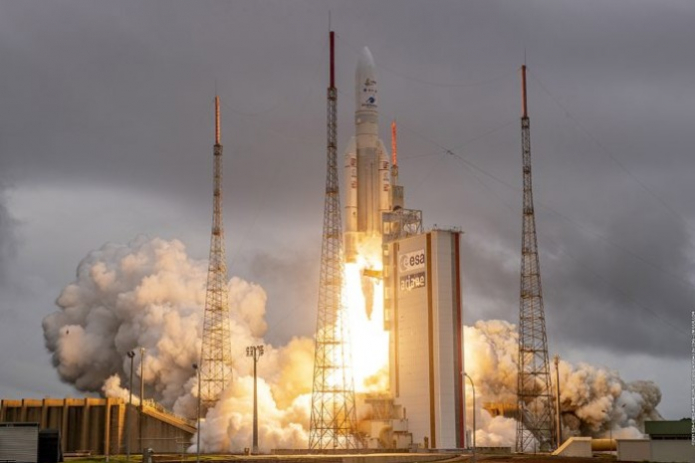
▲ The launch of Ariane 6 is imminent. Please introduce us to the technical features of Ariane 6 and any post-launch plans.
Ariane 6 will improve upon the successful features from our previous launchers, allowing Arianespace to even more perfectly respond to all the needs of the market.
We have already reduced production costs by 40%, compared to the Ariane 5 program. Thanks to its modularity, Ariane 6 will address all requirements, both institutional and commercial. It benefits from increased carrying capacities and a larger fairing. Its upper stage is re-ignitable for optimized deployments, perfectly matching new market requirements such as low-Earth orbit (LEO) constellations or multi-missions.
The launcher finalization campaign is reduced from one month to 10 days with Ariane 6, with a capability to launch every two weeks, allowing a sustained pace of launches necessary, for instance, to deploy constellations. Ariane 6 was designed to be an evolutionary launcher, with refinements to come through its Continuous Improvement Program, to increase the overall performance and competitiveness throughout its use and operation.
▲ Space X attained its price competitiveness thanks to the rocket re-use technology. We are aware of the fact that Arianespace is in the process of developing the re-use technology as well. When do you expect to launch such technology of Arianespace in the market?
Our parent company ArianeGroup, which is a 50:50 joint venture between Airbus and Safran, is developing the reusable 3D printed Prometheus engine, which will be 10 times cheaper than our current engines.
ArianeGroup leads another program called Themis, a re-usable stage demonstrator, which is the second key technological innovation to lay the groundwork for reusability in Europe. Prometheus and Themis will allow ArianeGroup to introduce as early as 2026 a reusable mini launcher called Maia, able to deliver about 500 kilograms into Sun-synchronous orbit (a standard LEO).
Our next generation of medium and heavy lift vehicles coming after Ariane 6 and Vega C will be reusable. They will fly during the next decade. But we must first concentrate on making Ariane 6 and Vega C a great success. Reusability is an efficient way to increase the cadence, but regarding overall competitiveness, it is not the only way to reduce costs.
▲ Defense and space companies in the US such as Lockheed Martin and Blue Origin are busy constructing the new International Space Station (ISS). Please share with us the evaluation of the ISS-related projects and the participation status of the ESA and Arianespace.
Arianespace participated in the cargo resupply of the ISS with the European Automated Transfer Vehicle (ATV), the first fully automated cargo vessel for space activities. Five ATVs were launched between 2008 and 2014 with Ariane 5 part of ESA’s ISS participation.
The ISS sequel, the so-called Lunar Gateway, to be developed in cooperation between the US (NASA), European (ESA), Japanese (JAXA) and Canadian (CSA) Space Agencies, will notably consist of two European modules: the international habitation module (I-HAB) and the European system providing refueling, infrastructure and Telecommunications (ESPRIT) to the Lunar Gateway.
Arianespace could participate in the deployment of this future space station during this decade. At a time when all major space powers are reinforcing or developing their human spaceflight programs, Europe still lacks this capacity. This new exploration wave could be the opportunity to move in that direction, as Europe already has the main technological building blocks for this competence.
I should remind everyone that ESA will provide propulsion, electricity, water and oxygen to the Orion Crew Vehicle through its European Service Module (ESM), which will be critical to the successful return of humans to the Moon. Arianespace would be delighted to operate human spaceflight with Ariane 6 or its successor.
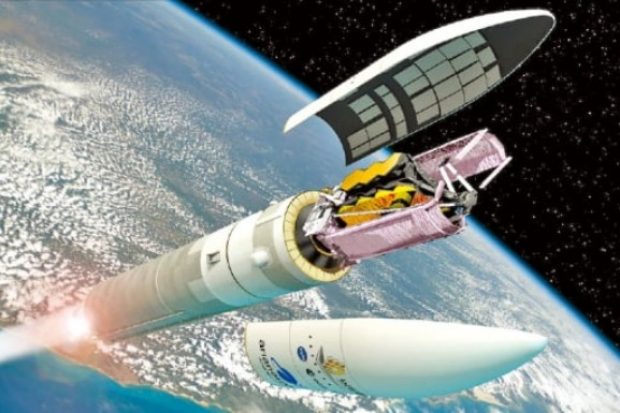
▲ You are among the unique specialists having experience in both the public and private sectors. You also have legal experience in space policy and institutional experience in launch systems. South Korea struggles with the current situation, where the launch technology of military forces and the technology of emerging private companies, even between small and medium-sized enterprises and startups, are not yet organically combined. Could you give some advice on this situation?
Space is fundamentally a project linking the public and the private sectors, it is a true public-private partnership project. Launcher technologies are partly derived from military capabilities. Institutional incentives are thus key to developing such launch technologies. They bring the minimum stability and perspective needed in the space sector.
On the other side, private companies can provide more innovation, rapidly with greater flexibility, especially with the emergence of startups. To be successful, we need to combine a strong commitment from space agencies and the excellency of the industry. And more and more, large companies, which are absolutely necessary for space to manage big projects such as heavy launchers, are going to work with newcomers and startups.
Arianespace is already working with startups as it is a win-win situation that could help us extend our catalog of available solutions, as well as create new business opportunities. In addition, our mother company ArianeGroup speaks for itself: it is a JV between two legacy industrial groups, Airbus and Safran; it has an operational and commercial arm wing, Arianespace; and with Maiaspace, it has created a structure that will be open to third parties and that aims to develop a reusable mini launcher in agile mode.
The best of both worlds, public/private and legacy actors/newcomers, need to combine and work hand in hand to reach for the most reliable and efficient way of access to space. I cannot give some advice to Korea, but I can say that France and Europe are now looking to boost the space eco-system made of agencies, large prime contractors and startups. This is the philosophy of “France 2030,” a plan set up by President Emmanuel Macron and the French government and which has a strong space component.
Each launch and contract is unique and memorable. I think of emblematic ones such as those for European institutions and scientific missions, but also what we achieved, launch after launch, for our commercial customers.
But the one James Webb Space Telescope has a special place in my heart. This is a once-in-a-lifetime mission and Ariane 5 performed flawlessly on Christmas of 2021, doubling Webb’s operational life expectancy in space. The telescope is the most capable, ambitious and innovative ever launched -- under its fairing, Ariane 5 hosted a $10 billion jewel. So, failure was not an option.
The whole world cannot wait for what Webb will unveil about the early evolution of our universe, and I am more than proud that Arianespace was part of this historic journey for NASA, ESA and CSA. In terms of contracts signed, I particularly think of our most recent one: Amazon’s project Kuiper for 18 launches of Ariane 6. This is the largest contract ever signed for Arianespace and is a real vote of confidence from our client for our future launcher.
It took us more than two years to make it happen, but from the very first day, we had the conviction that it would be a big story for Ariane 6 and Arianespace. Amazon has been for us more than a customer: it is a partner leading working in the best way possible to meet their requirements.
▲ The current issue in the space industry is to launch small and medium satellites as many as possible and at any time on demand. What is Arianespace’s stance on this?
Arianespace specifically developed solutions to answer these needs. For our lightweight launcher Vega we have the Small Satellites Mission Service (SSMS), which allows us to carry dozens of small satellites on a single flight and release them on different orbits.
The first SSMS flight occurred in September 2020 with more than 50 satellites deployed at two different altitudes, from CubeSats to microsatellites of 150 kilograms. For Ariane 6, we have the Multi-Launch Service (MLS), which is a modular carrying system that can be adapted to complex rideshare missions to LEO, GTO, direct-geosynchronous orbit (GEO) or even to the Moon.
As for the deployment of large constellations, we developed dedicated dispensers allowing us to stack dozens of similar satellites onboard and deploy them. Rideshare is the go-to solution for small satellites, as it is cost-effective. It is cheaper to take the bus than the taxi.
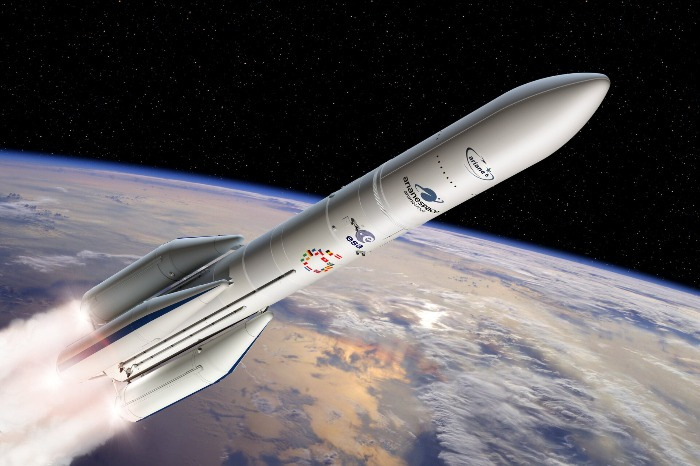
▲ Please introduce the projects in which Arianespace collaborates with ESA, including lunar exploration, constructing gateways and deep space exploration including Mars.
Arianespace will play a key role in the future of space exploration, especially toward the Moon and Mars. Ariane 6 is the perfect launch vehicle to address the growing lunar market thanks to its large lift-off capacity: 8.6 tons in a direct lunar transfer orbit, a performance that will only grow through the decade.
We are proposing full rideshare to the Moon with Ariane 6, which we like to refer to as a “Highway to the Moon” mission. The service will start in 2026 to share the launch costs between several lunar passengers, both commercial and institutional.
Ariane 6 will also be the perfect solution to deploy ESA’s future European Large Logistic Lander (EL3) to assure a sustainable presence of humankind the Moon. As for Mars, ESA is participating in the most ambitious Mars Sample Return campaign ever undertaken. ESA’s “Earth Return Orbiter” will be launched from Kourou in 2026 aboard Ariane 6 in order to recover samples collected by the Perseverance rover already at work, and bring them back to Earth in 2031.
But earlier than that, in 2023, Arianespace will launch the Jupiter Icy Moons Explorer (JUICE), a one-of-a-kind space probe that will meet the unexplored, exotic natural satellites of Jupiter, where scientists expect to find some forms of life.
▲ Please share with us in four keywords the importance and urgency in humanity exploring space.
Dream. Reaching for the stars is one of humanity’s oldest desires, and we are doing it! It is in human nature to push its own limits, to explore and face the unknown. Space is a great laboratory for answering fundamental questions, especially those of origins, which transcend land borders. In this way, the conquest of space is a real distillation of what carries societies beyond themselves.
Connectivity. In the era of the Internet of Things, with everyone and everything willing to be connected everywhere at any time, satellite connectivity brings resilience to terrestrial networks and robustness to the whole 5G ecosystem. Satellites will not only reduce the digital divide by bringing connectivity to remote areas such as archipelagos, countrysides, deserts and mountains, but they will also provide secure communications that are key for state sovereignty.
Protection. In space, we are capable of monitoring our planet by collecting environmental data on the Earth’s atmosphere, oceans, flora and fauna, that are not possible from the ground. It helps us to better understand and fight climate change.
Last but not least is Innovation. We must always think about the next step, the next technologies, the next solution.
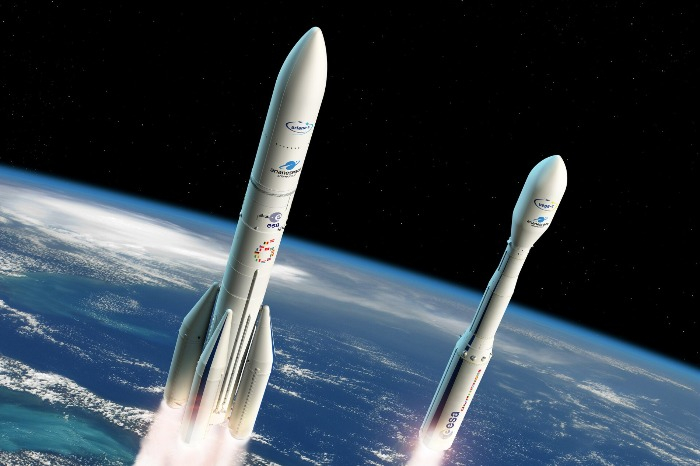
▲ You have an exceptional interest in Korea as you are the president of the "France-Corée" club. How do you find Korean space companies such as Hanwha and LIG Nex1? Also, are you considering any Korean companies for cooperative relations?
Hanwha is closely linked with our operations as it is an investor of OneWeb, for which we deployed more than 420 satellites. We need powerful investors such as Hanwha for ambitious projects to materialize. Arianespace has built a strong and lasting relationship with Korea since 1992.
We launched its first-ever satellite KITSAT 1A aboard Ariane 4. Since then, a total of eight Korean satellites were launched through our services, both institutional and commercial customers, whether it is for the Korea Advanced Institute of Science & Technology (KAIST), Korea Aerospace Research Institute (KARI) or KT Sat. Space is a strategic element of the French-Korean bilateral relationship, with a continuous dialogue on this matter, both on the launcher and satellite side. Arianespace remains at the disposal of all Korean actors who wish to reach for space, our solutions with Ariane 6 and Vega C can answer all their needs.
▲ The newly elected president of Korea is also planning to create a space agency exclusively dedicated to its mission in parallel with ESA. However, in this process, private companies and researchers are excluded and a power struggle remains as each of the government departments has its own agenda. Please advise on the direction that Korea should head.
Everything depends on the direction that Korea wants to give to its space program. It is not for me to say what should be your country's priorities in terms of space policy. What I can say is that space is fundamentally a matter of cooperation. It is a harsh domain that needs synergies between entities, as it is a very demanding sector in terms of technology, financing, policies and innovation.
Institutions and private companies need to work hand in hand if they want to accomplish great things together. A relationship of trust must be forged in order to go as far as possible, in the most efficient way. That is all I wish for Korea, which is a great technological power and whose success in the space journey I have no doubts about. I am sure that Korea will make the right decisions to boost its space ambitions.
Write to Hae-Sung Lee at ihs@hankyung.com
Jihyun Kim edited this article.
-
 Aerospace & DefenseUK satellite firm OneWeb to provide services in Korea
Aerospace & DefenseUK satellite firm OneWeb to provide services in KoreaMay 30, 2022 (Gmt+09:00)
long read -
 Corporate investmentHanwha to boost defense, aerospace biz with $2.1 bn spending
Corporate investmentHanwha to boost defense, aerospace biz with $2.1 bn spendingMay 25, 2022 (Gmt+09:00)
2 Min read -
 Aerospace & DefenseHancom to launch South Korea’s first private satellite
Aerospace & DefenseHancom to launch South Korea’s first private satelliteMay 18, 2022 (Gmt+09:00)
2 Min read -
 Aerospace & DefenseKorea sets Nuri space rocket’s second launch for mid-June
Aerospace & DefenseKorea sets Nuri space rocket’s second launch for mid-JuneFeb 25, 2022 (Gmt+09:00)
2 Min read -
 Aerospace & DefenseKorea’s Hanwha Aerospace to develop small rocket system
Aerospace & DefenseKorea’s Hanwha Aerospace to develop small rocket systemDec 06, 2021 (Gmt+09:00)
1 Min read -
 Aerospace & DefenseKorea Aerospace Industries, Airbus to jointly enter satellite business
Aerospace & DefenseKorea Aerospace Industries, Airbus to jointly enter satellite businessOct 31, 2021 (Gmt+09:00)
2 Min read


